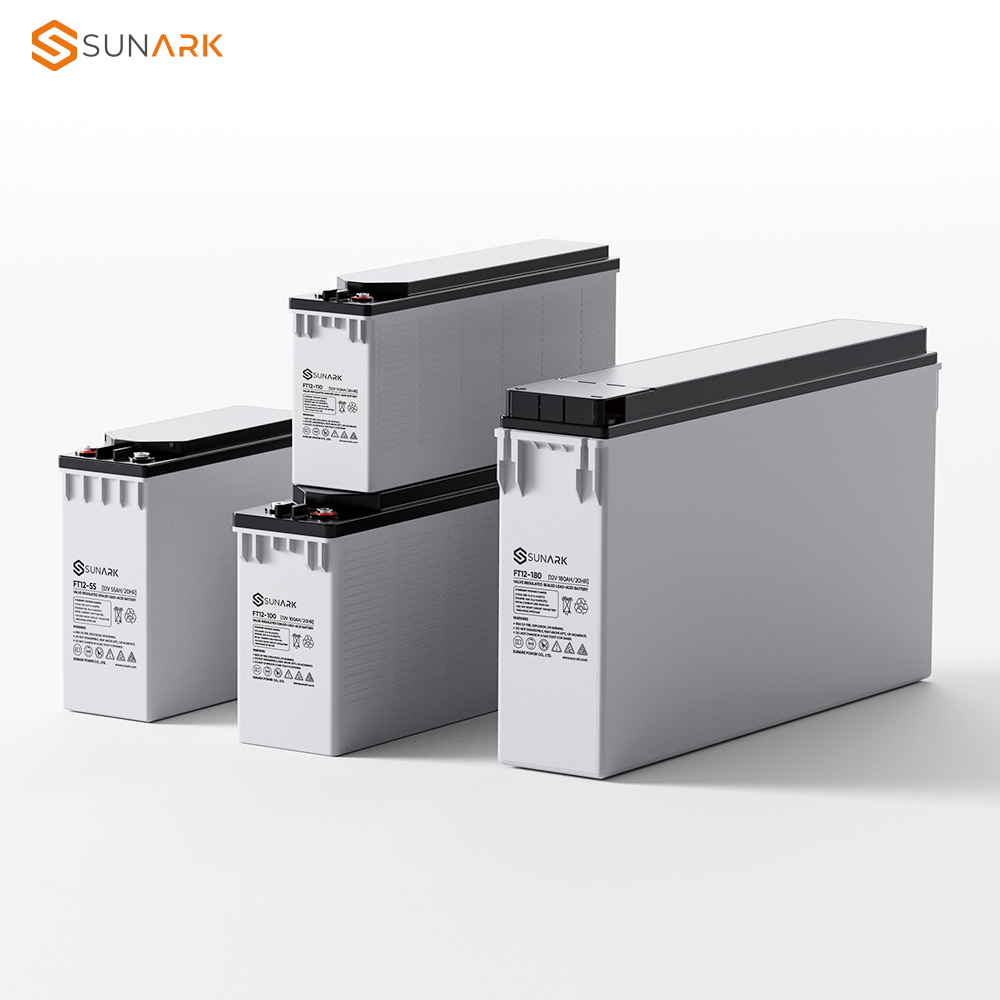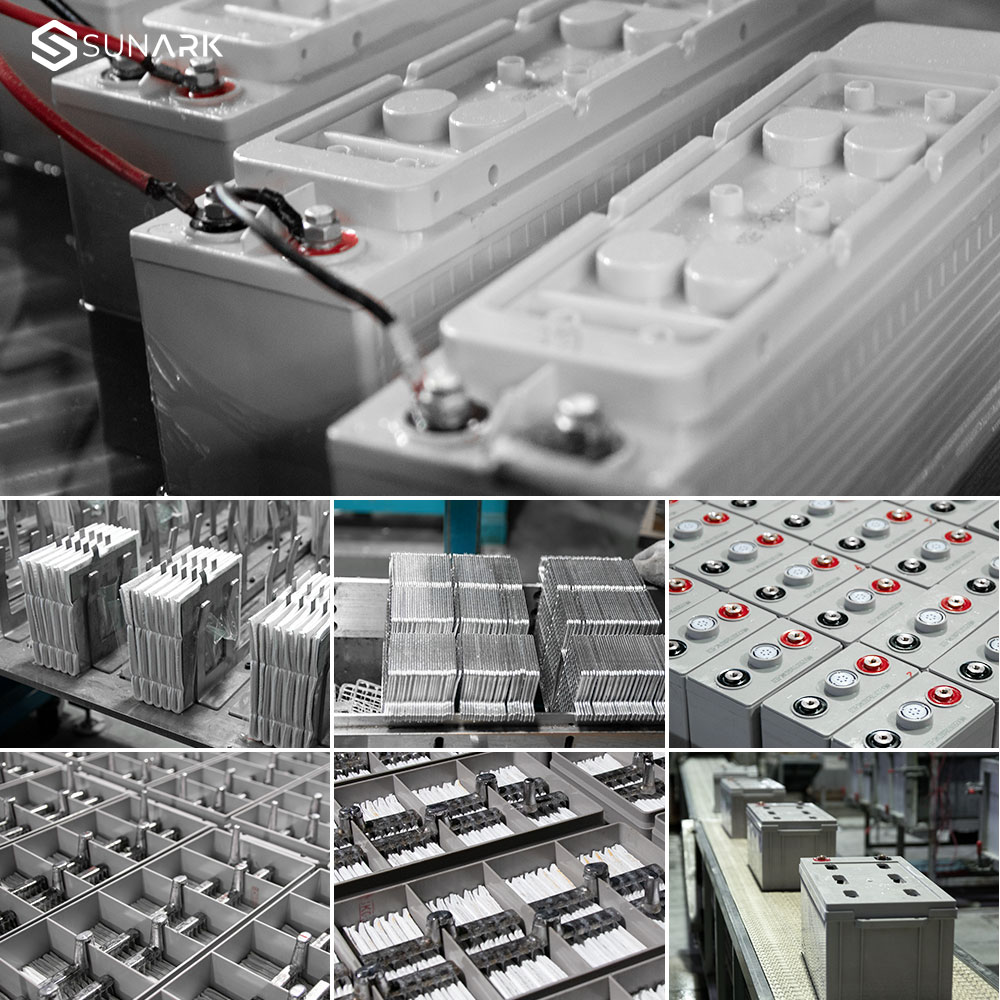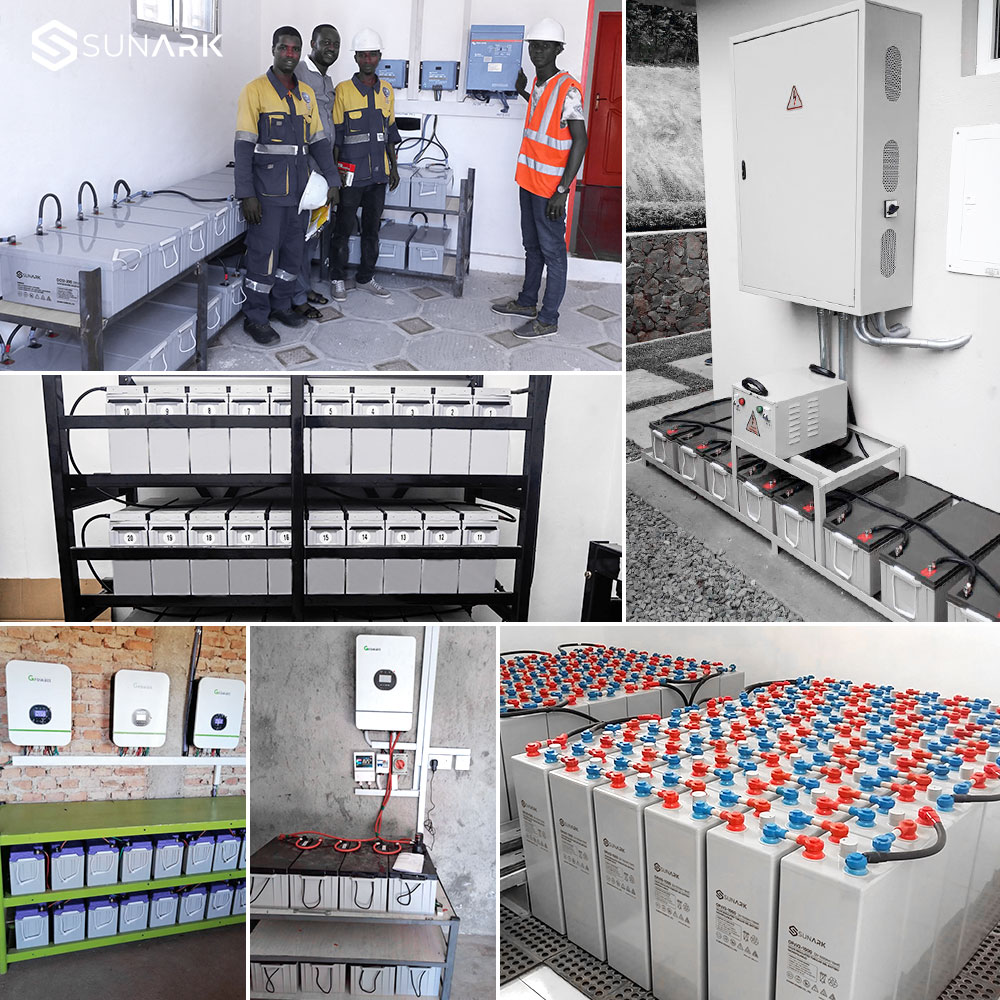SunArk deep cycle AGM series front terminal lead acid batteries has combined of good quality and free OEM advantages to the market, which has a design life more than 20 years, and 5 years warranty period.
AGM batteries are commonly used in a variety of applications, including automotive, marine, and renewable energy systems.
Cells Per Unit:
6Voltage Per Unit:
12VDesign Life:
20 years (Float charging)Standby Use Voltage:
13.6V~13.8V @25°CCycle Use Voltage:
14.2V~14.4V @25°COperating Temperature Range:
Discharge: -15°C~50°C Charge: 0°C~40°C Storage: -15°C~50°CNormal Operating Temperature Range:
25°C ± 5°CSelf Discharge:
Monthly Self-discharge ratio is less than 3.5% at 25°C.Container Material:
A.B.S. UL94-HB UL94-V0 OptionalFront terminal lead-acid batteries are a type of rechargeable battery commonly used in telecommunications applications, uninterruptible power supplies (UPS), and other similar standby power systems. They are designed with front-mounted terminals for easy access, installation, and maintenance.

Here are some key features and characteristics of front terminal lead-acid batteries:
Design: Front terminal batteries have a unique design where the battery terminals, usually in the form of threaded studs or bolts, are located on the front surface of the battery. This design allows for easy connection and maintenance in rack-mounted systems.
Valve-Regulated Lead-Acid (VRLA) Technology: Most front terminal batteries employ a valve-regulated lead-acid design, also known as sealed or maintenance-free batteries. These batteries are designed to recombine the generated gases during charging, eliminating the need for regular electrolyte maintenance. They are safer to handle and can be installed in various orientations without the risk of acid spills.
AGM or Gel Electrolyte: Front terminal batteries typically use either Absorbent Glass Mat (AGM) or Gel electrolyte technologies. AGM batteries have a fiberglass mat soaked in electrolyte, while Gel batteries use a silica-based gel. These technologies immobilize the electrolyte, reducing the risk of acid leakage and making the batteries more resistant to vibration and shock.
High Energy Density: Front terminal batteries offer high-energy density, allowing them to provide reliable power in applications where space is limited. They often have a high reserve capacity, enabling them to provide backup power for a longer duration.
Maintenance-Free: Since front terminal batteries are VRLA batteries, they are maintenance-free, eliminating the need for regular electrolyte checks and water refills.
Deep Cycling Capability: These batteries are capable of deep cycling, meaning they can be discharged and recharged repeatedly without significantly affecting their performance. This feature makes them suitable for applications where frequent power outages or load shedding occur.
Long Service Life: Front terminal batteries are designed to have a long service life, typically ranging from 5 to 10 years, depending on the specific model and operational conditions.
Suitable for Rack-Mounted Applications: The front terminal design of these batteries makes them well-suited for rack-mounted systems commonly found in data centers, telecom facilities, and other industrial settings. Their convenient front access allows for easier installation, replacement, and maintenance, especially in space-constrained environments.
It's important to note that specific battery models and manufacturers may have variations in design, performance, and specifications. It's always recommended to refer to the manufacturer's documentation and guidelines for detailed information on a particular front terminal lead-ac battery.

The production process of lead-acid batteries involves several steps. Here's a simplified overview:
Lead and Lead Oxide Preparation: Lead, typically in the form of lead ingots, is melted and refined to remove impurities. Lead oxide, which is used for the positive electrode (cathode), is produced through a chemical reaction.
Plate Manufacturing: The battery plates are made by casting a specific mixture of lead and other additives onto a grid-like structure. These plates consist of the positive plates (made with lead dioxide) and negative plates (made with porous metallic lead).
Assembly: The battery assembly process involves stacking the positive and negative plates alternately with separators in between to prevent short circuits. The plates are connected to lead terminals.
Acid Filling: The assembled battery is filled with dilute sulfuric acid, which acts as the electrolyte. The acid concentration is typically around 30% to 40%.
Sealing and Formation: The battery is sealed to prevent acid leakage. Then, a process called formation is performed, where an initial charging and discharging cycle is applied to the battery to activate the electrochemical reactions and establish the capacity.
Final Testing and Quality Control: The batteries undergo various tests to ensure their performance and durability. These tests typically include capacity testing, resistance measurement, leakage testing, and voltage checks.
Packaging and Distribution: Once the batteries pass quality control, they are packaged and prepared for distribution to customers.
It's worth noting that the production process may vary slightly among different manufacturers, but the fundamental steps remain similar. Additionally, battery recycling is an important aspect of lead-acid battery life cycle management, as lead is a toxic substance and should be properly handled and recycled to minimize impact.

In a solar system, lead-acid batteries are commonly used to store the energy generated by solar panels. Here's an overview of how lead-acid batteries work in a solar system:
Charging: When sunlight falls on the solar panels, they convert the solar energy into electrical energy. This electrical energy is used to charge the lead-acid batteries. The charging process involves converting the electrical energy into chemical energy.
Electrolyte: Lead-acid batteries consist of two lead plates immersed in an electrolyte solution, typically sulfuric acid mixed with water. One plate is coated with lead dioxide (PbO2), called the positive plate, and the other plate is made of pure lead (Pb), called the negative plate. The electrolyte allows the flow of ions between the plates.
Chemical reactions: During charging, the electrical energy causes a chemical reaction in the battery. The positive plate undergoes a chemical reaction where lead dioxide (PbO2) converts into lead sulfate (PbSO4), releasing oxygen. At the same time, the negative plate reacts with the electrolyte and forms lead sulfate (PbSO4), releasing hydrogen.
Discharging: When energy is required from the battery, the process is reversed. The lead sulfate on the plates combines with the electrolyte, forming lead dioxide on the positive plate and pure lead on the negative plate. This chemical reaction releases electrical energy that can be used to power devices or systems connected to the battery.
Battery capacity: The capacity of a lead-acid battery refers to the amount of electrical energy it can store. It is measured in ampere-hours (Ah). The capacity depends on the size and design of the battery.
Maintenance: Proper maintenance is important to ensure the longevity and performance of lead-acid batteries in a solar system. This includes regular monitoring of the battery's state of charge, avoiding deep discharges, watering (if the battery is not maintenance-free), and protecting the battery from extreme temperatures.
Lead-acid batteries are widely used in solar systems due to their affordability and proven technology. However, they require regular maintenance, have limited energy density, and can be sensitive to overcharging or deep discharging. Alternative battery technologies such as lithium-ion batteries are gaining popularity in solar systems due to their higher energy and longer lifespan.
FAQs:
Q1: Do you support OEM/ODM?
A:Definitely, OEM&ODM service is supported with a certain quantity,including customize logo,package and label;
Q2: What's the production time?
A: The production time is normally 15 working days. but we will always prepare some stocks for popular models.
Q3: Can you provide DDP service?
A:Yes, if you are a personal customer and don't want to deal with the customs, we can provide DDP service to your address.
Q4: What about the warranty and how to claim?
A: Warranty period are 10 years since you receive the product, our professional after-sales team will deal with all warranty issues.